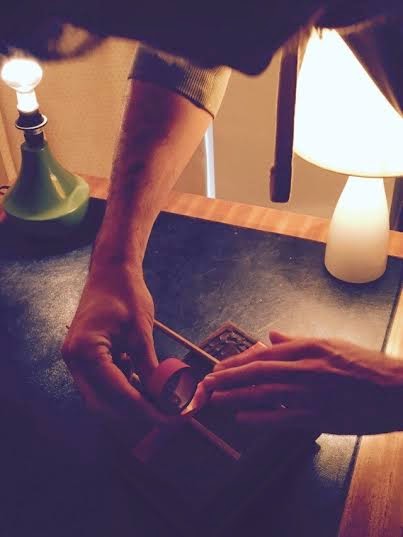Because I'd had the opportunity to speak with most of the group during the production process, discussing difficulties and seeing them work, I really enjoyed watching all of their finished pieces. As they weere presenting their final pieces it felt as though they were sharing theirs journeys with us, and although quality of the finish varied, that wasn't always a reflection of the efforts.
Solution no Pollution
by Rhian Davies
The Animation that stood out for me was this one produced by Rhian Davies.
"This is a Fantastic, simple, well produced Animation. That shows what can be done with very little materials and funds " (Me, Just now).
Not only is this a really professional looking stop motion animation, which presents a really clear message, it also shows a lot of technical and creative ability. Rhian Produced this aniamtion completely on her own, and she spent a week on the whole process.
Rhian explained that she had used paper for the animation because it would be easier and less time consuming to work with. What is clear though, is that the time that she saved using paper, was put back into producing a finely detailed, visually creative piece. All the visuals were very cleverly done, but i think my favourite parts were the representation of the wind coming in and the detail in which the leaves were scooped up and blow out of the scene. The fire part was also very clever and Rhian explained how that was done. She cut out three separate fire, different heights and then to give the appearence of it moving she turned them back to front between frames.
The sound worked very well for the peice too. The soundtracks volume was well balance with the sound effects and both added to the animations effect without overpowering it. The consistency of the frame was also very good, there were only a few changes in light and shadows, obviously due to the fact that it was produced over a number of days. The camera was kept still throughout and the number of frames and smoothness of the animation was also good. Im sure that the number of frames could have been increased to create an even smoother image, but given that it took a week to produce this, that might have been difficult.
General group evaluation
From listening to and talking with the groups as they presented their animations it became clear that many of us shared similar experiences and gained similar insights. The things we had learnt included the patience that was required to work with stop motion, the difficulties of applying sound to a movie and other general insights regarding lighting and shadow, the limitations of certain materials and planning and working in groups.
What possibly stood out more though was the variety of the final peices and how this might have reflected the variety of learners in the class. What this demonstrated to me was that in any given class, a project like this could provide the opportunity for a person to individualise their own learning, allowing the learner to work with their own focus, while promoting new skills.
To take myself for example, I'm not drawn to working creatively in an artistic sense, you only have to read my blogs to understand that, so in this animation I choose to use a very simple claymation ball design to avoid having to draw and create detailed designs. Your initial reaction to this might be that in this case having the freedom to choose my own design was negative, because I simply choose to avoid something I couldn't do and focus instead on my own agenda, a smoothly linked production for example. However, having this freedom engaged me in the task, in which I went on to develop others areas I don't see myself as being strong in such as ITC and working in a group. Having that learner freedom created a give and take, compromise that worked for me.
Although not everyone appeared to enjoy the entire process of making the animation, it seems on reflcetion that after completing the task, most of the group felt they had learnt something from it and felt quite proud of their final work. Creating an stop motion animation is something that I would definately encourage others to do especially in a learning environment.


















